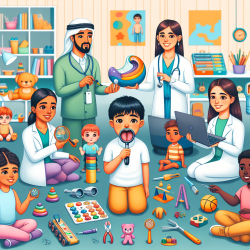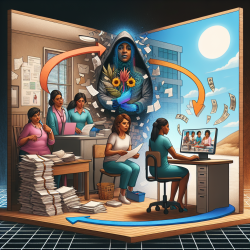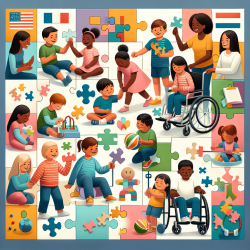As practitioners, we are continually seeking ways to improve our skills and outcomes for the children we serve. A recent study titled "Cross-sector collaborations in Aboriginal and Torres Strait Islander childhood disability: a systematic integrative review and theory-based synthesis" offers valuable insights that can guide our efforts. This research emphasizes the importance of inter- and intra-sector collaborations to enhance service access and outcomes for Aboriginal and Torres Strait Islander children with disabilities. Let's delve into the key findings and explore how we can implement these strategies in our practice.
Understanding the Research
The study conducted a systematic integrative review, analyzing both peer-reviewed and grey literature. The findings were synthesized using the ecological framework, which considers factors at the macro (government), exo (organizational), and meso (provider) levels. This approach provides a comprehensive understanding of the components necessary for effective collaboration.
Key Findings
- Macro-Level Factors: The structure of government departments and agencies often operates in silos, impeding service integration. Policies that promote formalized agreements and collaborative frameworks can facilitate better coordination.
- Exo-Level Factors: Effective communication and awareness among agencies are crucial. Clear role definitions and responsibilities, along with adequate financial and human resources, are necessary to sustain collaborative models.
- Meso-Level Factors: Building strong relationships at the provider level is essential. Coordinators or linking roles, often filled by community members, can bridge gaps between services and communities. Inter- and intra-professional learning also fosters collaboration.
Practical Implementation
Here are some actionable steps practitioners can take to implement the findings from this research:
- Advocate for Policy Changes: Work with local and national organizations to promote policies that support cross-sector collaborations. Formalized agreements such as MoUs can be instrumental in this process.
- Enhance Communication: Create platforms for regular communication between different service providers. This can include joint meetings, shared databases, and collaborative training sessions.
- Build Relationships: Invest time in building relationships with other providers and community members. Trust and mutual respect are foundational to effective collaboration.
- Focus on Cultural Competence: Ensure that services are culturally appropriate and delivered in environments that are safe and welcoming for Aboriginal and Torres Strait Islander families.
- Leverage Community Resources: Utilize the knowledge and expertise of community members who can act as liaisons and coordinators, facilitating smoother interactions between services and families.
Encouraging Further Research
While this study provides a national snapshot, each community is unique. Further research is needed to explore local contexts and develop tailored collaborative solutions. Practitioners are encouraged to engage in or support research efforts that investigate the specific needs and effective collaboration strategies within their communities.
By integrating these findings into our practice, we can work towards better outcomes for Aboriginal and Torres Strait Islander children with disabilities. Collaboration across sectors is not just beneficial; it is essential for providing holistic and effective care.
To read the original research paper, please follow this link: Cross-sector collaborations in Aboriginal and Torres Strait Islander childhood disability: a systematic integrative review and theory-based synthesis.










